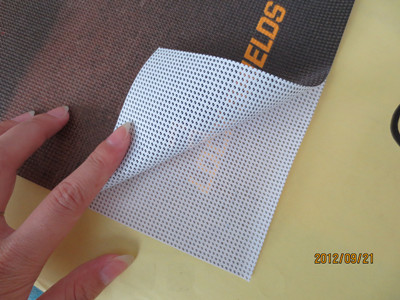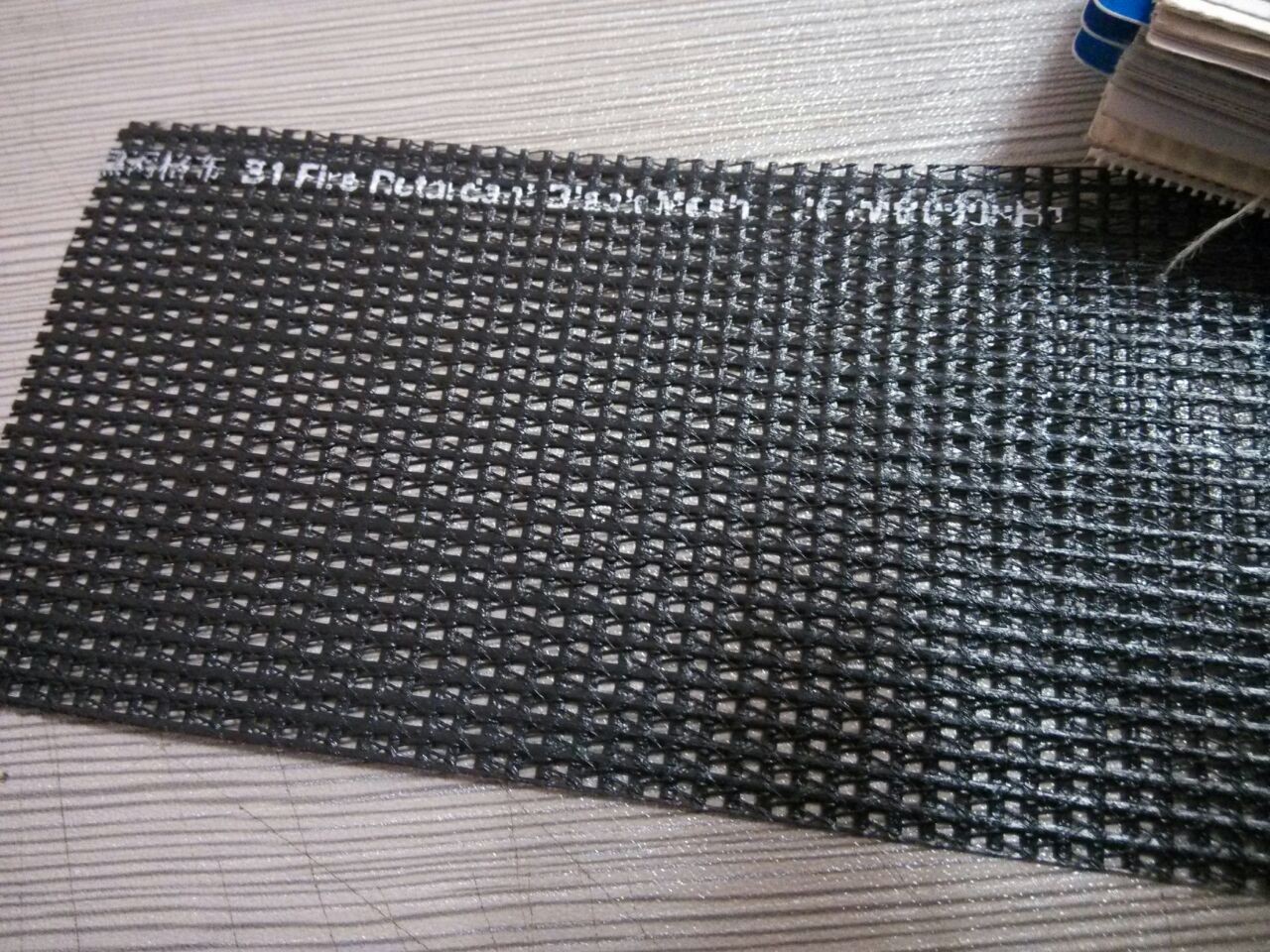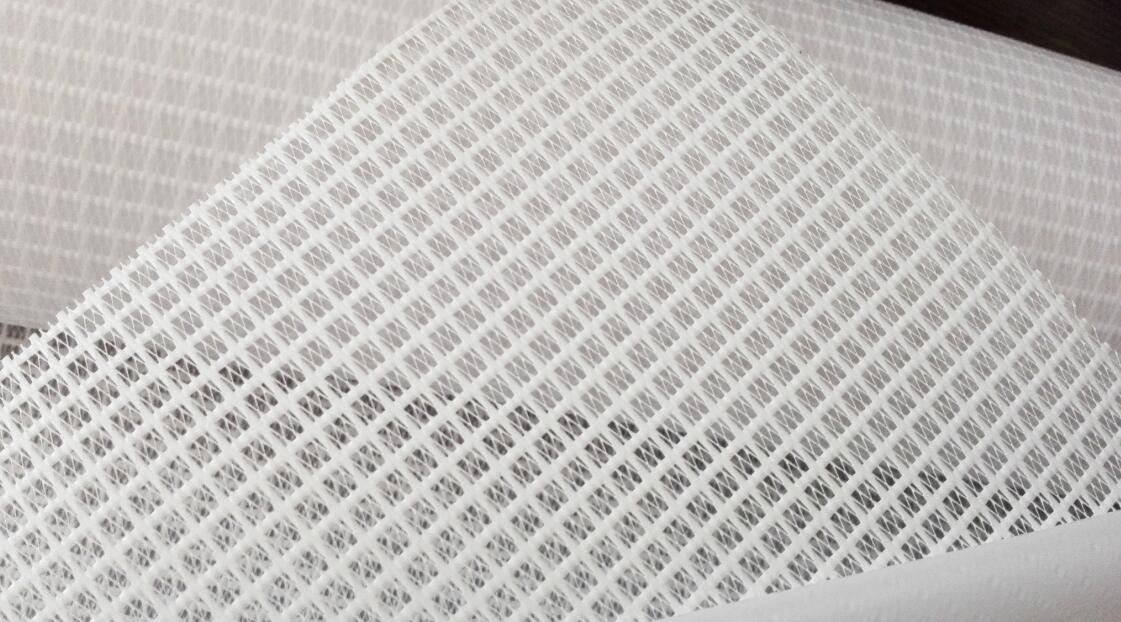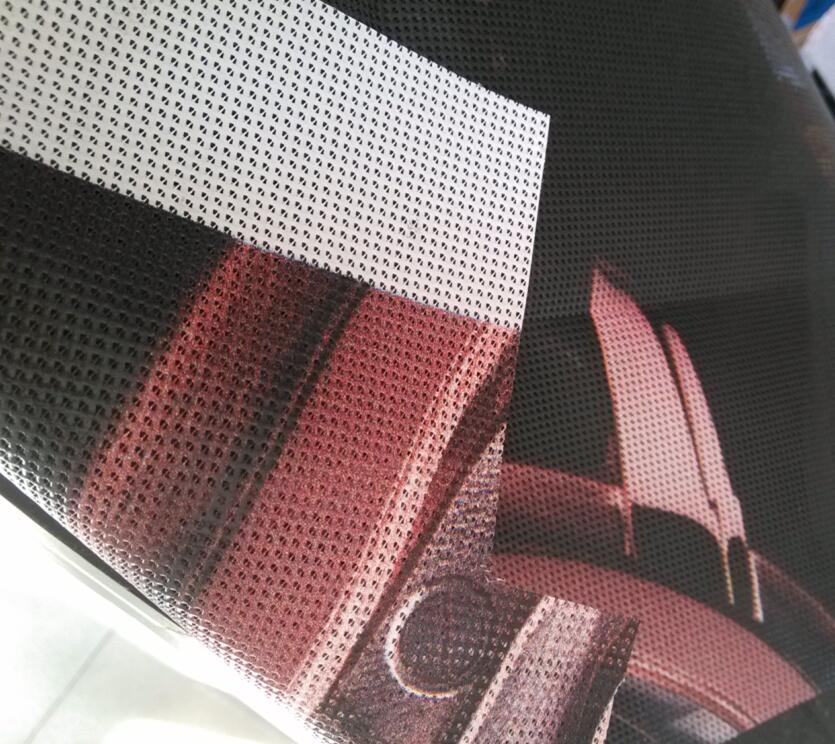Vinyl Mesh Banners is one kind of banners , it is very
light and wind can pass through. It is famous as fence wraps banners .The width
seamless is 500cm ( 16.4 ft ) and length is 30-50 meters . For more large
banner ,we can weld professionally and strongly .
The pvc mesh banners materials we have as below :
Type of Yarn
Thread count
Type of coating
Weight
(without backing film)
Tensile Strength
Picture
polyester
9*9
pvc
255g (7.5oz)
1100*1000N/5CM
polyester
12*12
pvc
270g
1600*1400N/5cm
polyester
9*13
pvc
250g
1000*1000N/5CM
1. Lareg hole pvc mesh bannerLareg hole pvc
mesh banner
2. 220g without back film per square meter
1. Double sided printing pvc mesh banners
(not two pieces sewing together)
2. 480g per square meter
3. B1 Fireproof
All of our pvc mesh materials can provide B1 Fireproof
Certificate !
Fence Wrap Banners,Vinyl Mesh Banners,Pvc Mesh Banner Sign Golden Mouth Advertising (H.K)Co.,Ltd. ( Jie Da Advertisement Co.,Ltd) , http://www.cmykprinted.com





Requirement and Application of Metal Sealing Butterfly Valve in Cryogenic Valve
With the rapid development of economy and industrial technology, the ever-changing high-tech and people's demand for valves make the valve industry face enormous challenges and opportunities. In particular, the use of butterfly valve in low temperature medium, in addition to meet the performance of the valve under normal temperature conditions, but more importantly, the reliability of the valve seal at low temperatures, the flexibility of movement and some of the other low-temperature valve special requirements. Butterfly valve with a compact, small size, light weight (with the same pressure, the same size of the gate valve can be reduced compared to 40% to 50%) fluid resistance, opening and closing quickly and a series of advantages, it has been widely used. However, some low-temperature installations in our country, such as natural gas liquefaction equipment, air separation equipment and pressure swing adsorption equipment used in the chemical industry, such as valves used in more than 80% of the globe valve or gate valve, the use of a small number of butterfly valves. The main reason is that the sealing performance of the metal sealing butterfly valve is not good at low temperature and other phenomena of internal leakage and leakage of the medium due to the unreasonable structure and other factors seriously affect the safety and normal operation of these low temperature equipments and the low temperature Equipment requirements. According to the continuous development of low-temperature devices in our country, the requirements for cryogenic valves are increasing day by day. Therefore, structural improvements have been made to the metal-sealed butterfly valve and the butterfly valve with high eccentricity and high eccentricity has been developed. No matter whether the medium is hot or cold To meet their needs. Now with its structural features, only a brief introduction of low temperature performance. First, the low temperature valve sealing performance requirements: There are two main reasons for the leakage of low temperature valves, one internal leakage; the second is leakage. 1) The main reason for the internal leakage of the valve is the deformation of the seal pair caused by the low temperature. When the media temperature drops to make the material phase change caused by the volume change, the original grinding precision of the sealing surface warpage caused by low temperature sealing bad. We have DN250 valve low temperature test, the medium is liquid nitrogen (-196 ℃) Butterfly material 1Cr18Ni9Ti (no low temperature treatment) found that the sealing surface warpage deformation of about 0.12mm, which is the main cause of internal leakage. Newly developed butterfly valve from the plane seal to cone seal. The valve seat is an oblique cone oval sealing surface, and the butterfly valve is mounted on the circular seal ring is composed of flexible seal. Seal ring can float radially within the disc groove. When the valve is closed, the elastomeric seal first comes into contact with the minor axis of the elliptical sealing surface. As the valve stem rotates, the sealing ring is pushed inwardly forcing the elastomeric ring into contact with the longer axis of the bevel, eventually causing the elastomeric sealing ring All contact with the elliptical sealing surface. Its sealing is achieved by the elastic ring deformation. Therefore, when the valve body or disc deformation occurs at low temperature, it will be compensated by the elastic sealing ring without leakage and jamming. When the valve is opened, the elastic deformation immediately disappears, basically no relative friction in the opening and closing process, so long service life. 2) valve leakage. One is that when the valve and the pipe are flanged, the connection pad, the connecting bolt and the connecting piece shrink at the low temperature and the materials are not synchronized to generate relaxation and lead to leakage. Therefore, we change the way of connecting the valve body and the pipeline from the flange connection to the welding structure, so as to avoid the low-temperature leakage. The second is the stem and packing leaks. Most of the general valve filling F4, because of its good self-lubricating properties, small friction coefficient (friction coefficient of steel f = 0.05 ~ 0.1), but also has unique chemical stability, it has been widely used. However, F4 also has shortcomings, first, cold tendency; Second, the linear expansion coefficient, resulting in shrinkage at low temperatures lead to leakage, resulting in a lot of ice at the valve stem, so that the valve open failure. Developed for this reason, the use of self-shrinking seal structure of low-temperature butterfly valve that is the use of large expansion coefficient F4 features, through the gap to reach the room temperature, low temperature can be sealed. Second, the valve body, stem bushing design requirements 1) low temperature valve housing structure and shape. The correct choice of materials on the valve of the normal and reliable work is extremely important. Compared with the stop valve and gate valve, the structure of the butterfly valve not only avoids the deformation caused by the irregular shape and the uneven wall thickness of the shell, but also the shrinkage and temperature difference caused by low temperature stress. Moreover, due to the small size of the butterfly valve, About the shape of the basic is called, so the heat capacity is small; to the cold consumption is also small; shape rules and convenient for the valve cooling measures. For example, DD363H disc valve newly developed by Shanghai Vivendi Valve is designed and manufactured according to the particularity of the cryogenic valve in order to ensure the reliable use of the valve under low temperature. For example, 1Cr18Ni9Ti austenite with cubic crystal lattice Body stainless steel and so on. 2) stem bushing choice. According to the user, some low-temperature valves in operation, the valve parts of the sticky, occlusion phenomenon occurs, the main reason is: matching material selection is not reasonable, to stay cold clearance is too small, and processing accuracy and other reasons. In the development of cryogenic valves, has taken a series of measures to prevent the above phenomenon. For example, we choose the SF-1 composite bearing with small friction coefficient and self-lubricating property on the valve stem upper and lower bushing, which can be suitable for some special needs of cryogenic valve. Metal-sealed butterfly valve has the characteristics of some ordinary valves do not have. In particular, small flow resistance, reliable sealing, quick opening and closing, long service life.